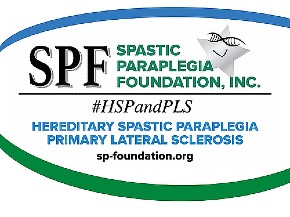About Heredity and Genetics
General Information
This material has been reviewed by Dr John Fink, M.D., SPF Medical Advisor. Please see the Glossary to help with medical terms.
What is an hereditary disorder?
A hereditary or genetic disorder is caused by a change (mutation) in a gene. Genes are pieces of biochemical information that form the instructions (code) for the thousands of proteins the body uses to build itself and function. Half of someone’s genes come from their mother and half come from their father. Some genes are responsible for obvious traits such as eye color. Others control the production of substances essential to bodily processes. Some act as on-off switches for other genes.
When a gene is altered, the instructions cannot be coded to make the correct protein. As a result, the protein might not be created at all, or might be made incorrectly. While many gene mutations have little or no effect on the body, some can result in the development of serious genetic disorders. In HSP, gene mutations alter the code for proteins involving particular nerve cells in the brain and spinal cord, which disrupts their proper functioning.
The mutated gene that causes HSP can be passed down from parent to child. However, inheriting a mutant HSP gene does not automatically mean someone will have the disorder. There are many forms of HSP, each caused by different genes. The risk of inheriting the disease depends on the particular features of the gene involved.
Answers to specific questions can be found below. In addition to reading over the information below, you can also find information at:
-
Find consumer-friendly information about the effects of genetic variation on human health.
Genes and Chromosomes
Humans have about 50,000 genes. Genes come in pairs, and each pair makes up a very small section on a chromosome. Humans have 46 chromosomes arranged in 23 pairs in every cell in the body, except for the sperm and egg cells.
Twenty-two of these pairs are called autosomes and they are the same for each sex. The twenty-third pair of chromosomes consists of the sex chromosomes. Women have two X chromosomes while men have one X and one Y chromosome. The Y chromosome determines maleness.
Sperm and egg cells contain just one of the chromosomes from each pair, i.e., 23 individual chromosomes. When a sperm and egg come together and conception begins, a new cell is formed that brings the individual chromosomes together into one pair. Thus, every person receives half of his or her genes from the father’s sperm cell, and half from the mother’s the egg cell.
Risk of Inheritance
HSP is not one disease but rather a group of similar disorders, each caused by different genes that cause very similar symptoms. The risk of inheriting an HSP disorder depends on the particular features of the gene involved. In other words, it depends on whether the gene lies on an autosome or the X-chromosome, and on whether the gene is dominant or recessive. In some forms of HSP, it can also depend on the sex of the child and/or the parent.
There are three different modes of inheritance: autosomal dominant, autosomal recessive, or X-linked.
Autosomal Dominant
Most forms of HSP are autosomal dominant. Autosomal means the HSP gene is located on one of the autosomal chromosomes. The gene can be present in either sex, and it can be passed down from either a mother or a father to a son or a daughter. Dominant means that only one HSP gene is needed to cause the disorder.
Since there is a 50% chance a child will receive the dominant HSP gene mutation from the affected parent, there is a 50% chance the child will inherit the gene and the disorder. This is the same risk for every birth, independent of every other birth.
Note: There are many reasons why someone with no apparent family history may have an autosomal dominant form of HSP. Please see “How can it be HSP when no one else in the family has it?” below.
Autosomal Recessive
Some forms of HSP are autosomal recessive. This type of HSP also lies on one of the autosomes, so it can be present in males or females and passed to males or females. Since it is recessive, two copies of the gene are needed to result in the disorder, one from each parent.
In these forms, neither parent has HSP. Instead, they are carriers. They each have one mutant HSP gene and one normal HSP gene. A mutant HSP gene that is recessive can be passed down silently for generations until someone finally inherits the recessive gene from both parents and develops the disorder.
If a mother and father are each carriers for a recessive HSP gene mutation, each of their children has a 25% chance of developing HSP. This is the same risk for every birth. There is a 50% risk the child will be a carrier like the parents. That child would receive one mutant HSP gene from one parent and a normal HSP gene from the other. There is a 25% chance that the child would receive only the normal HSP genes from each parent. This child would not be affected by HSP, nor would he be a carrier.
For individuals with autosomal recessive HSP to have children with the disorder, their spouses have to either have the disorder or be a carrier. This is possible in marriages between cousins in families with this type of HSP.
X-linked
Some HSP genes are found on the X chromosome. Disorders due to genes on the X chromosome are called sex-linked or X-linked since the gene is on one of the sex chromosomes.
The inheritance risks and severity of this type of HSP differ depending on the individual’s sex. Women with an X-linked mutant HSP gene are generally not affected by the disorder; or, if they are, usually have less severe symptoms than males.
Each son of a woman who is a carrier for X-linked HSP has a 50% chance of developing HSP. Each daughter of a woman who is a carrier for X-linked HSP has a 50% chance of being a carrier (female carriers of X-linked disorders often have no symptoms).
Special Questions
-
Are there risks associated with genetic testing?
Having a small amount of blood drawn doesn’t hold much risk, however, there are many important issues to consider. Genetic testing is so new that the legal, ethical, and medical implications are still unclear. Genetic testing can potentially interfere with privacy, insurance eligibility, or employment.
In addition, pre-symptomatic or carrier testing of children is highly controversial. Many experts do not encourage testing at-risk children or adolescents to determine whether they may eventually develop HSP. Some medical centers prohibit genetic testing of minors unless there is a compelling medical reason. Even testing of adults can have unintended consequences.
That’s why seeking guidance from a genetics counselor is a wise idea when considering testing. Counselors may be medical professionals with special training or individuals who have received education and certification as genetic counselors. They provide information about inheritance and the chances of having children affected by a particular inherited disease. They can also provide emotional support and make referrals to appropriate resources.
Neurologists can refer interested individuals to genetics counselors. A good online resource is the National Society for Genetic Counselors.
For lots of information on genetics, please visit the National Institutes of Genetics Home Reference and the Genetics Alliance website.
-
Memory disturbance has been reported in some individuals with HSP due to spastin gene mutations. In general, it was mild.
Before attributing memory disturbance to HSP, it is important to consider other causes: stress, anxiety, depression, lack of sleep, medications (including Baclofen), other health conditions including vitamin B12 deficiency.
If memory disturbance is significant, a cause of concern, or worsening, it would be important to discuss this with your primary physician and neurologist.
-
There are many explanations for why individuals who have all the signs and symptoms of HSP do not appear to have a family history of the disorder. The most common reason is that the condition may be recessive or X-linked. These forms may have passed down silently for generations until the correct circumstances existed for someone to have the disorder.
Even someone with a dominant form of HSP may not appear to have a family history of the disorder. Since HSP can vary greatly in severity of symptoms and age of onset, a parent may have had a very mild case. His or her symptoms may have gone unnoticed or been attributed to other problems such as old age or arthritis. In addition, since symptoms can develop later in life, the person may have died before showing symptoms, or if still living, may not have developed them yet. Finally, it could be a new gene mutation, making the affected person the first in his family.
-
Athena Diagnostics currently offers testing for HSP mutations in five different genes. The test is called the Hereditary Spastic Paraplegia Evaluation. Some insurance policies will cover some or all of the fees while others will not cover the testing.
These five genes are responsible for approximately 70% of dominantly inherited forms of HSP. Mutation in one of these genes (for dominantly inherited HSP) are also found in approximately 10% of individuals who have progressive spastic paraplegia but no previous family history. Researchers have identified 39 different genetic forms of HSP. Hopefully, analysis for additional HSP genes will become available and increase laboratory diagnosis of HSP.
Gene tests can also be used for prenatal testing. Editor’s Note: A member of our community submitted an article on gene testing. Please see Patient Forum – gene testing.
In addition, the following website is mainly written for health care providers but offers valuable information for lay people as well – http://www.genetests.org/
-
While the odds of any given conception having a gene mutation can be calculated, it is not possible to predict how severe symptoms will be or the exact age of onset. Hereditary Spastic Paraplegia (HSP) has significant variation in the degree of functional impairment (difficulty walking). The severity of symptoms may vary both between different genetic types of HSP and also within one family in which affected individuals not only have the same genetic type of HSP but also have the exact same HSP gene mutation.
Sometimes, but certainly not always, symptoms begin at earlier ages and may be more severer in subjects in succeeding generations. For example, symptoms may begin in the grandparent at age 35, in the child at age 15, and in the grandchild at age 5. This pattern, called “genetic anticipation” is certainly not the rule, however.
Often, “genetic anticipation” can not be distinguished from “random chance”. Since the age at which symptoms begins is variable, it is possible that just by random chance, members of a small family (such as only three affected subjects) could appear to have this pattern of “progressively younger/genetic anticipation” (when actually, it was just a random chance that the ages of symptom onset fell into this pattern).
Therefore, since a) genetic anticipation is not always seen (indeed does not appear in most families), and b) HSP symptom onset and severity are variable even within families, and c) most families are too small to make statistically significant predictions, we do not make predictions that HSP symptoms in subsequent generations will definitely be more severe or begin earlier.
Our Impact since our inception...
-
Dollars Raised
Over 11,000,000 dollars for research!









